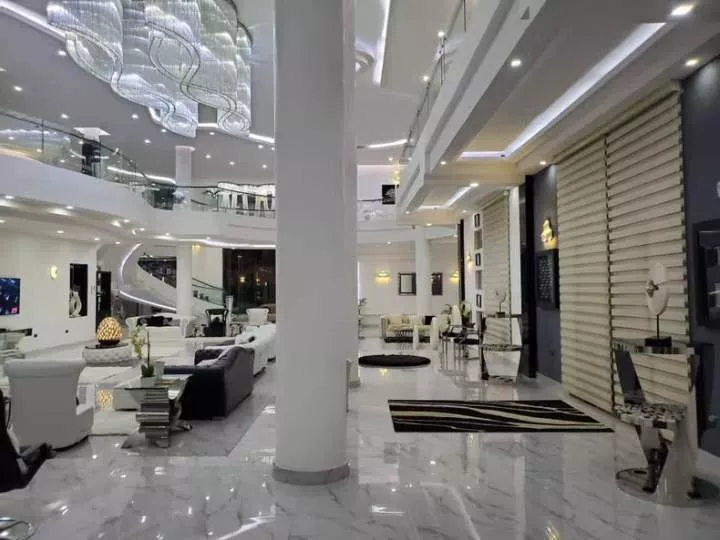
Ever peeked at a listing for a Beverly Hills mansion and wondered who on earth needs 12 bedrooms and a bowling alley? You're not alone. The lifestyles of the ultra-wealthy are endlessly fascinating, and their mega-mansions are a big part of that intrigue. But beyond the perceived extravagance, how do billionaires and the like actually use all that space?
Living Large: Function Over Opulence
While some rooms might seem like pure indulgence (think trophy rooms for car collections), there's often a surprising amount of functionality built into these sprawling estates. Designer Gavin Ambrose, who specializes in high-end residential architecture, says, "Many people think of these homes as simply big, but the focus is really on creating dedicated spaces for specific needs."

A Room for Every Hobby
Imagine having a personal art studio, a movie theatre, or an indoor sports complex - that's the reality for some. Tech billionaire Bill Gates, for instance, has a trampoline room in his Washington state mansion. These dedicated spaces cater to the unique interests of the residents, allowing them to pursue passions without leaving home.
Family & Guests: A House Within a House

Many mega-mansions are designed with separate wings or floors for family and guests. This allows for privacy and caters to the reality that even the wealthy don't spend every waking moment with their families.
Staff Quarters: The Unsung Heroes
Let's not forget the army of staff who keep these large homes running smoothly. Live-in housekeepers, chefs, and security personnel often have dedicated quarters within the mansion itself.
The High-Maintenance Reality
Maintaining a mega-mansion is a full-time job in itself. Extensive landscaping, cleaning large square footage, and ensuring complex systems like home theatres and pools function flawlessly all require dedicated staff. This upkeep can be a significant hidden cost.

Mega Mansion features
Entertainment Spaces: One of the most common features in these mansions is extensive entertainment areas. This includes home theatres with advanced sound systems and stadium seating, game rooms equipped with billiards, ping pong tables, and even arcade machines. For instance, Jeff Bezos' Warner Estate in Beverly Hills features lush gardens, a pool, tennis courts, and a golf course.

Fitness and Wellness: Many mega-mansions come with state-of-the-art fitness centres, often rivalling commercial gyms. These might include indoor pools, tennis courts, and even full-sized basketball courts. Larry Ellison's Florida mansion, for example, includes extensive outdoor and indoor sports facilities.
Work and Study: Home offices in these estates are not merely functional but are designed to impress. They are spacious, often with luxurious finishes, and are equipped with the latest technology. Libraries with walls lined with books offer a quiet retreat, adding to the intellectual appeal of the home .
Leisure and Luxury: Billionaire homes often feature unique leisure facilities such as wine cellars, art galleries, and expansive walk-in closets. Bill Gates' estate, known as Xanadu 2.0, includes a 60-foot swimming pool with an underwater music system, a 2,500-square-foot gym, and a reception hall that can accommodate up to 200 guests.
Outdoor Spaces: The exteriors of these mansions are just as luxurious as the interiors. They often include beautifully landscaped gardens, outdoor kitchens, dining areas, and sometimes even private docks or helipads. The properties are designed to be private, often surrounded by high walls and security features to ensure the residents' safety and privacy.

Unique and Personalised Rooms: Each mansion often has rooms tailored to the owner's personal interests. This could range from music studios, art rooms, or even special grooming rooms for pets. In some cases, there are more unconventional additions like bowling alleys, car showrooms, or even indoor waterfalls.
In essence, these mansions are designed to be self-contained worlds, where the ultra-wealthy can indulge in their hobbies and entertain guests without ever needing to leave their homes. This level of opulence showcases not just wealth but also a lifestyle that values privacy, convenience, and personalised luxury.
Beyond the Show
While there's no denying the status symbol aspect of a palatial home, philanthropist and Microsoft co-founder MacKenzie Scott's recent downsizing to a relatively modest home shows that even the ultra-wealthy sometimes prioritizes practicality over ostentation.
Ultimately, how a billionaire uses their mega-mansion depends on their lifestyle and priorities. But one thing's for certain - it's a far cry from just a big house; it's a carefully designed space catering to every need and whim.

















Comments